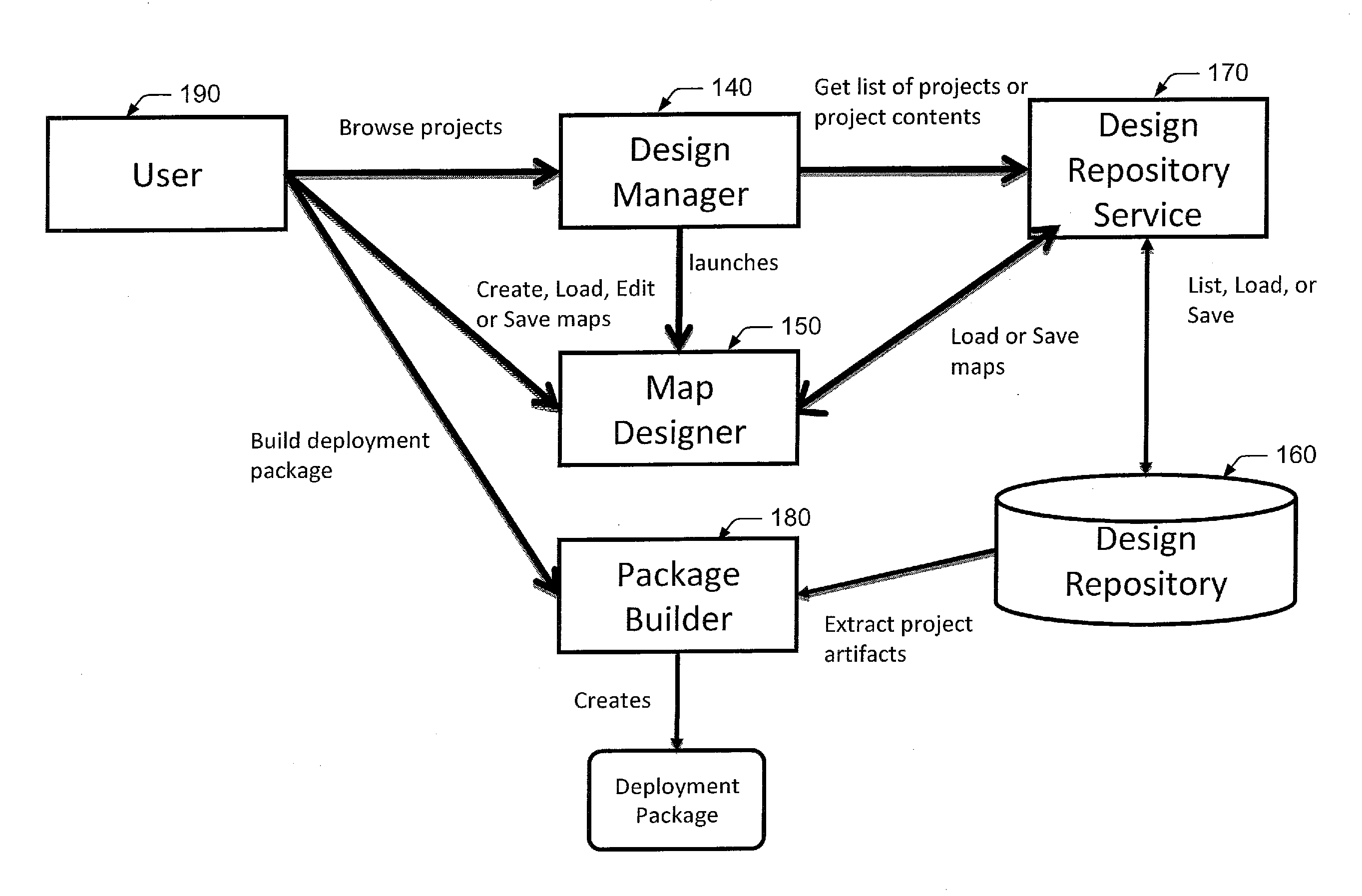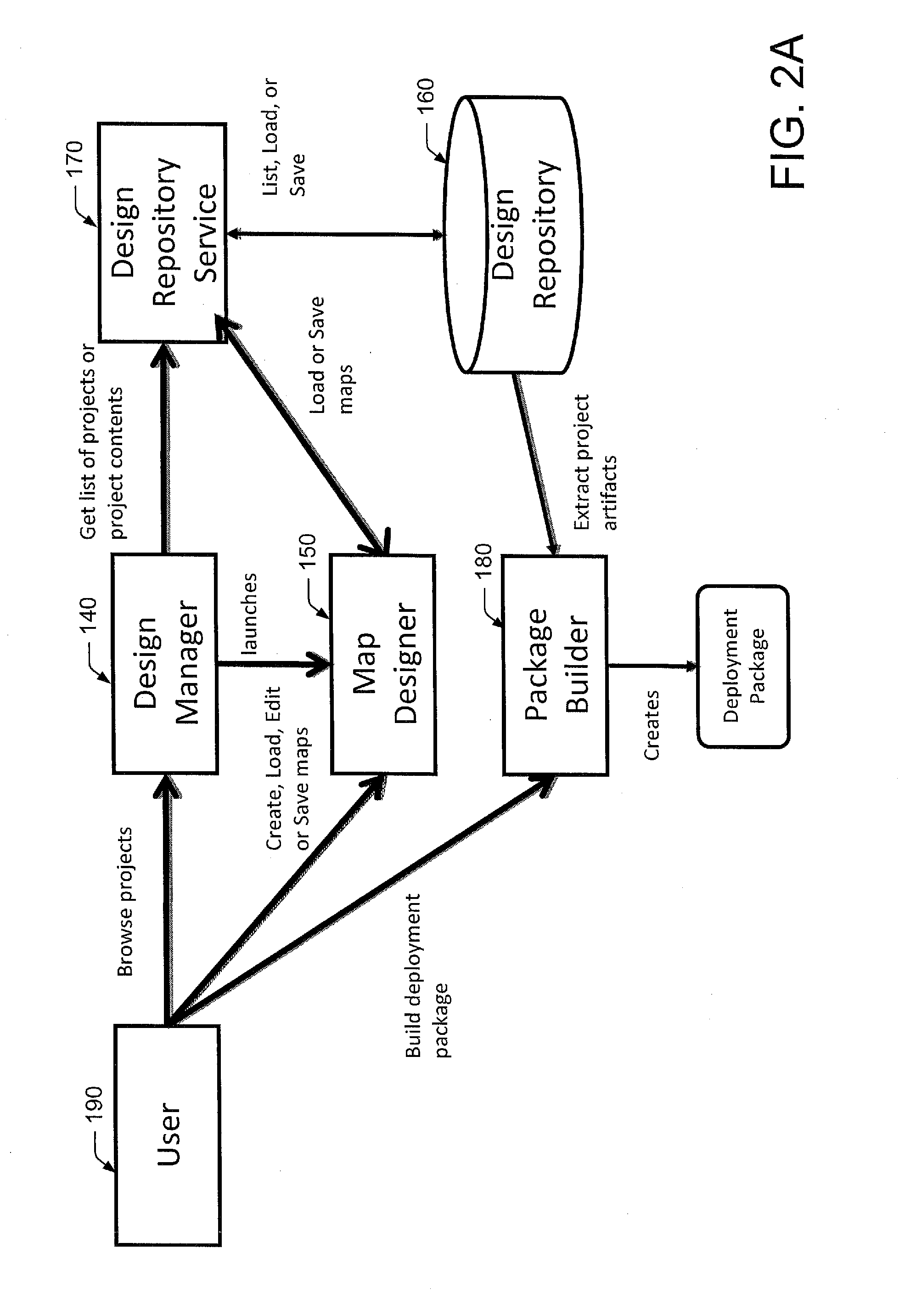Data Transformation System, Graphical Mapping Tool And Method For Creating A Schema Map
a schema map and data transformation technology, applied in the field of data transformation, can solve the problems of not being portable, difficult to adapt to new or changing circumstances, and high implementation costs of custom-coded solutions and customized tools,
- Summary
- Abstract
- Description
- Claims
- Application Information
AI Technical Summary
Benefits of technology
Problems solved by technology
Method used
Image
Examples
example 1
A Simple Copy Operation
[0222]A common case with data integration is where data is copied between similar types of systems. For example, product information may be periodically copied from an accounting system to a CRM system. In these cases, the objects in the source and target schemas will often have similar structures and the mappings between the objects will be fairly simple.
[0223]In the example map shown in FIG. 18, we use sample company databases from two products. The first is the Northwind Traders database shipped with the Microsoft SQL Server and Microsoft Access products. The second is the Classic Model Corporation database, which is used as a sample database for the Eclipse Business Intelligence and Reporting Tool (BIRT).
[0224]The map is very simple. There is one control link (Link 1), which is used to control the iteration over the records in the source data set and to control the generation of output records to the target data set. All other links (Links 2-11) are used f...
example 2
A Simple Aggregate Operation
[0236]A common operation in data warehousing projects is the aggregation of source data. The scenario shown in FIG. 19 looks at a simple aggregation use case. In this case, Order Detail information from a source database is used to compute records wherein the total order amount is calculated for each order. The assumption is that the source data is sorted by order number.
[0237]This map is also very simple and includes only one control link (Link 1) to control the iteration over the records in the source data set and to control the generation of output records to the target data set. All other links (Links 2, 3a and 3b) are for mapping the source fields to the target fields. There is one target field (orderTotal) where the value is derived from values in two source fields (quantityOrder and priceEach).
[0238]Link 1 is the only control link in the map. To perform the aggregation, two EA (unconditional ECA) rules are used, one EA rule for aggregating values a...
example 3
A Multi-Mode Operation
[0241]Multi-mode targets support multiple types of output operations on one or more target objects. These operations include insert (default), delete, update and upsert. In multi-mode, each output record is assigned an output operation and a target name. This is achieved, in one embodiment, by binding each record type in the target schema to a specific output operation and target object. To select an operation other than the default insert, keys must be defined for matching the records to be deleted, updated or upserted.
[0242]The schema map of FIG. 20 demonstrates an exemplary multi-mode output operation for a source schema representing the structure of the Invoice Data query. We assume that the input data is sorted by Order ID. For any given Order ID, the source dataset includes one or more records determined by the number of order details. The schema map of FIG. 20 generates output for two different tables in the target data set: one Order record for each uni...
PUM
 Login to View More
Login to View More Abstract
Description
Claims
Application Information
 Login to View More
Login to View More - R&D
- Intellectual Property
- Life Sciences
- Materials
- Tech Scout
- Unparalleled Data Quality
- Higher Quality Content
- 60% Fewer Hallucinations
Browse by: Latest US Patents, China's latest patents, Technical Efficacy Thesaurus, Application Domain, Technology Topic, Popular Technical Reports.
© 2025 PatSnap. All rights reserved.Legal|Privacy policy|Modern Slavery Act Transparency Statement|Sitemap|About US| Contact US: help@patsnap.com



